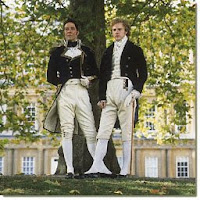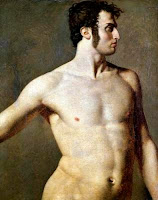
HIS TOUCH HOLDS HER CAPTIVE…
From the ravens circling its spires to the gargoyles adorning its roof, Blackberry Manor looms ominously over its rambling grounds. And behind its doors, amid the flickering shadows and secret passageways, danger lies in wait.
TO HIS EVERY DARK DESIRE…
Evangeline Pemberton has been invited to a party at the sprawling estate of reclusive Gavin Lioncroft, who is rumored to have murdered his parents. Initially, Gavin’s towering presence and brusque manner instill fear in Evangeline…until his rakish features and seductive attentions profoundly arouse her. But when a guest is murdered, Evangeline is torn. Could the man to whom she is so powerfully drawn also be a ruthless killer?
TOO WICKED TO KISS!
 A big welcome to the Riskies, Erica. Tell us how you made your sale.
A big welcome to the Riskies, Erica. Tell us how you made your sale.
As luck would have it, I got The Call while I was in Costa Rica for a month. More accurately, I missed the call while I was in Costa Rica, because the last time I’d traveled, I’d managed to rack up a $600 bill in roaming charges, and had decided not to use my cell phone. One day, I’m checking my email in an internet cafe, and I open one from my agent that says, “What do I have to do to get you to call me back??? I’ve been leaving you messages for days. We have an offer for your book!!!” (After I picked myself up off the floor, I decided that this phone call would have been worth the long distance roaming!)
What was the inspiration for your book?
I was sitting in a conference workshop where the speaker explained the term “High Concept” as the juxtaposition of two disparate things, such as a cross between Movie A and Movie B, or two things that don’t normally go together, such as “killer dinosaurs in Disney World” (Jurassic Park). I immediately began daydreaming unusual elements to bring into the world of Regency-set historicals, and ran with a “Dead Zone” style heroine caught up in a house party murder. The first draft was okay, but when I blank-page rewrote it in a more Gothic voice, I fell in love.
What do you love about the Regency–and what do you dislike about the period?
What I love about the Regency could fill pages! I love the fashion, the attitudes, the parties, the various coping mechanisms used to deal with the political instability in England and the reality (and aftermath) of the Napoleonic wars. I love the attention to detail, from the letters discussing sandwiches with ham sliced whisper-thin to the fashion plates with every button and flounce done just so. Above all, I love the many, many rules–from the unwritten societal norms to the laws regarding rights and inheritances–and I love characters who try and bend them. The only thing I dislike about the period is the unfortunate lack of methods to record more details. How I would love to see video footage of a ball, or listen to a taped conversation between unsavories using true canting slang!
What do you like to read and who has influenced your writing?
The very first romance I ever read was a historical (Johanna Lindsey) and from that moment, I was hooked. I inhaled Julie Garwood, Jude Devereaux, Judith McNaught (er… apparently only people whose first name begins with J. I knew I should’ve taken a pen name!) From there, it was an addiction, and I read every Regency author I could get my hands on. Before I discovered romance, however, my shelves were mostly filled with thrillers, mysteries, and paranormal horror novels by authors like Stephen King and Dean Koontz. Those roots are definitely where I get my love of a strong suspense element, but now that I found my home in Regency England, I cannot imagine life without an emotional love story and an HEA!
What’s risky about your book? (The Standard Risky Question!)
Some of my favorite Regencies take place in the world of the ton, where the heroine falls in love with the titled hero as they dance and swirl about a London ballroom (or seek a clandestine corner in which to steal a kiss or two.) Too Wicked To Kiss, however, features a rich but untitled hero who lives apart from Society in his remote, forbidding mansion. He’s dark, dangerous, and likes it that way–the perfect antihero for the very Gothic tone and feel of the novel. The heroine, Evangeline Pemberton, has her own risky element–she’s cursed with psychic visions that come with skin-to-skin contact. And then there’s that murder…
What’s next for you?
A connected book tentatively titled Too Sinful To Deny will be released in 2011, featuring one of the main characters from Too Wicked To Kiss. (There’s even a sneak peek chapter in the back of 2W2K!) This heroine definitely does not have her best foot forward in Too Wicked To Kiss, and will have to deal with some hard truths about herself before she can live happily ever after with the sexy (pirate!) hero of Too Sinful To Deny.
TOO WICKED TO KISS has been selected as a March book club pick for Barnes and Noble! Erica will be at the book club forum all month long, so please stop by to say hi or to talk about the book!
Get extra content and bonus features for Too Wicked To Kiss on the Unauthorized Scandal Sheet. For contest, blogs, embarrassing photos, and other fun stuff, check out Erica’s author web site . Please join Erica for lots of games and prizes on Facebook. And if you have Twitter, please come tweet with Erica.
But before you rush off all over the Blogosphere, make your comment here and enter the drawing for a signed copy of Too Wicked To Kiss.











